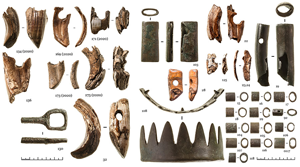Locating RFI Sources Using Near-Field Corrections: A Study for 21cm Cosmology During the Epoch of Reionization
Researchers have developed a novel method to locate radio frequency interference (RFI) sources, particularly those from near-field objects like airplanes, using near-field corrections. This method combines far-field phasing, near-field corrections, and beamforming to precisely pinpoint the 3D location of RFI emitters by maximizing the coherence of curved near-field signals. This is more efficient than traditional flagging, preserving more usable data and enhancing the chances of detecting the 21cm signal during the Epoch of Reionization. Results demonstrate effective altitude estimation of RFI emitters, revealing performance differences under varying observational conditions, laying the groundwork for more precise RFI removal in the future.
Read more
